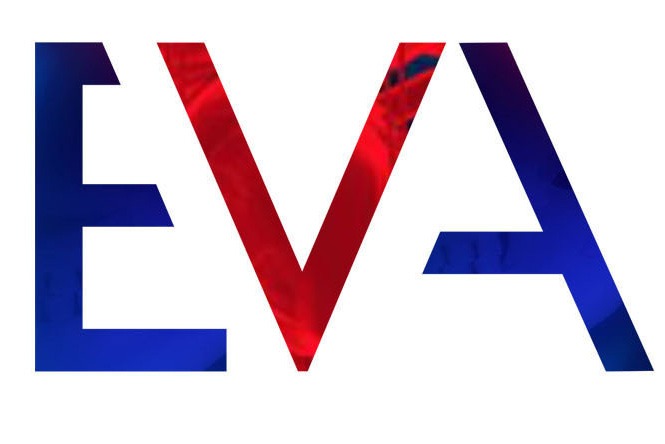
Until recently, creation, maintenance and restoration of vascular access function was entirely performed by open surgical methods. However, it is becoming apparent that endovascular management is a valid treatment option and a comparable alternative to the open surgical one, write Panagiotis M Kitrou, Konstantinos Katsanos and Dimitrios Karnabatidis from Patras, Greece, who are organising the first EVA meeting on the topic on 21–22 June 2019, in Patras, Greece.
Vascular access constitutes the “lifeline” for haemodialysis patients. Until recently, creation, maintenance and restoration of function (when thrombosis occurred) was performed by open surgical methods. However, it is becoming apparent, verified even in the most recent surgical and interventional guidelines for vascular access, that endovascular management is a valid treatment option and a comparable alternative to the open surgical one.1–3

In the last decade, there has been a continuous development of novel endovascular tools and devices (some of which were initially tested in the arterial vascular bed) that have made the endovascular approach faster and more appealing. Different types of wires and catheters, low profile devices, high-pressure balloons, drug-coated balloons, scoring balloons and covered stents have improved patency rates, and in many cases circuit survival.4 Each of these devices offers an additional option to the operator. High-pressure balloons have revolutionised vascular access treatment, mainly because stenosis in this specific vascular field is characterised by an aggressive fibromuscular thickening that needs high pressures of up to 40atm, in many cases, to enable treatment. Drug-coated balloons have allowed for more extensive use of high-pressure balloons by decelerating the effect of restenosis.5,6 Covered stents offer a valid bail-out option in cases of persistent stenosis or elastic recoil; pseudoaneurysms; and ruptures—and there is Level 1 evidence supporting their use as a primary option for the treatment of venous graft anastomotic stenosis.7
When thrombosis occurs, endovascular treatment with thrombolysis, thrombectomy or, in many cases, a mix and match of these procedures offers quick, safe and efficient ways of blood flow restoration. It also allows the patient to return immediately to haemodialysis without the need for central venous catheter placement.8 Several thrombectomy devices are available on the market and there is already extensive clinical experience with these devices. An important benefit of endovascular treatment is that it offers the ability to perform, in the same setting, both declotting and treatment of the underlying stenosis, which in the majority of cases is the reason for thrombosis.
“EndoAVF”, a major advancement
Lately, there has also been a major advancement in the vascular access field with the endovascular creation of AVF. This innovation occurs in a scenario where the gold standard (open surgery) has a failure rate of more than 50%. With two systems already available on the market (WavelinQ [BD] and Ellipsys [Avenu]) and with evidence detailing their benefits beginning to mount, patients will have the opportunity to have their fistula created without the need for surgical cut-downs, incisions and sutures, which are largely responsible for failure of maturation and future stenosis. Being available via a 4F radial or “wrist” access or under ultrasound guidance, these fistulas are created in the deep venous system. “EndoAVF” provides additional vascular access creation sites (two when WavelinQ is used and one when Ellipsys is employed) and could conceivably become the primary option for fistula creation. The reason for this is that “endoAVF” does not implicate the superficial venous system, which is the system used in the open surgical fistula creation. Additionally, in case of failure, conditioning of the superficial outflow veins of the arm may occur facilitating faster surgical fistula maturation.
Even though there is a growing role for endovascular vascular access management, centres performing these procedures remain low. We believe it is important for all specialties involved to understand the benefits that endovascular approaches provide to haemodialysis patients. Meetings on the specific subject remain highly “open surgery oriented and those with broader audiences sometimes combine vascular access treatment with venous disease. We feel that there is a need to help disseminate education and awareness in this area, particularly among nephrologists on the endovascular pathway/service they can provide to their patients. Endovascular therapists, either interventional radiologists, vascular surgeons or interventional nephrologists would also gain from staying current with developments in the field with a view to improving the care available to haemodialysis patients. In light of the current developments in this field, hospital multidisciplinary team meetings should involve endovascular specialists and congresses on the specific subject should be geared towards a multidisciplinary approach. It is in this context that the EVA (Endo Vascular Access) Meeting was created—its content is specifically designed to focus on the treatment options that the endovascular approach offers to haemodialysis patients. From EndoAVF, trial updates and treatment of symptomatic central venous stenosis to central venous catheters and background development, the EVA Meeting presents a multidisciplinary faculty of physicians from around the globe. The first EVA Meeting will be held in Patras, Greece on 21–22 June 2019.
Panagiotis M Kitrou and Konstantinos Katsanos are assistant professors of interventional radiology and Dimitrios Karnabatidis is a professor of interventional radiology, Patras University Hospital, Patras, Greece. They are also directors of the EVA meeting.
References
- Dariushnia SR, Walker TG, Silberzweig JE, et al. Quality improvement guidelines for percutaneous image-guided management of the thrombosed or dysfunctional dialysis circuit. J Vasc Interv Radiol. 2016;27(10):1518–30.
- Ibeas J, Roca-Tey R, Vallespin J, et al. Spanish clinical guidelines on vascular access for haemodialysis. Nefrologia. 2017;37 Suppl 1:1–191.
- Schmidli J, Widmer MK, Basile C, et al. Editor’s Choice – Vascular Access: 2018 Clinical practice guidelines of the European Society for Vascular Surgery (ESVS). Eur J Vasc Endovasc Surg. 2018;55(6):757–818.
- Kitrou P, Papasotiriou M, Katsanos K, et al. Recent developments in endovascular interventions to sustain vascular access patency in haemodialysis patients. Nephrol Dial Transplant. 2018.
- Trerotola SO, Lawson J, Roy-Chaudhury P, Saad TF, Lutonix AVCTI. Drug coated balloon angioplasty in failing AV fistulas: A randomized controlled trial. Clin J Am Soc Nephrol. 2018;13(8):1215–24.
- Kitrou PM, Papadimatos P, Spiliopoulos S, et al. Paclitaxel-coated balloons for the treatment of symptomatic central venous stenosis in dialysis access: Results from a randomized controlled trial. J Vasc Interv Radiol. 2017;28(6):811–7.
- Haskal ZJ, Trerotola S, Dolmatch B, et al. Stent graft vs. balloon angioplasty for failing dialysis-access grafts. N Engl J Med. 2010;362(6):494–503.
- Kitrou PM, Katsanos K, Papadimatos P, et al. A survival guide for endovascular declotting in dialysis access: Procedures, devices, and a statistical analysis of 3,000 cases. Expert Rev Med Devices. 2018;15(4):283–91.











